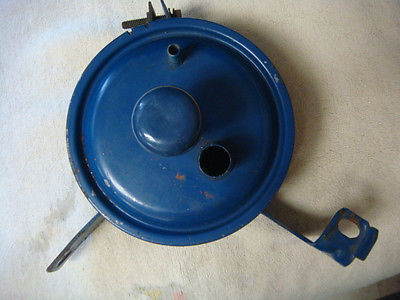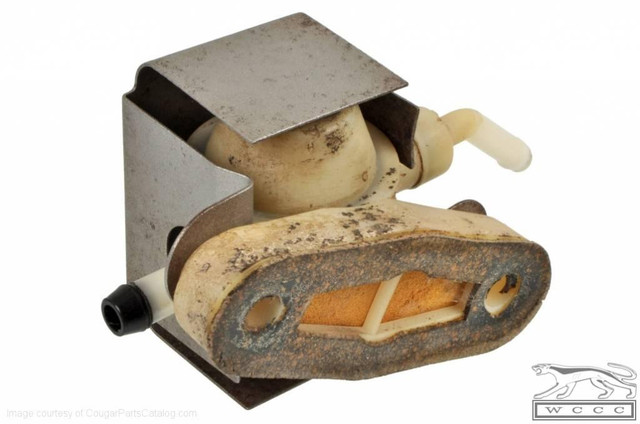Mach1 Driver
Member
- Joined
- Dec 6, 2017
- Messages
- 11
- Reaction score
- 0
- Location
- Atlanta
- My Car
- 1969 Mach1
351W, FMX, ps, pb, ac
original owner
Hi guys, I'm a newbie here, and for good reason- I own a 69 Mach. One of its problems is that my wife doesn't like to drive in it because it stinks up the garage. Ford started with the evap system in 1970 in California, and then refined it in all the 71-73 cars. For the older cars, the garage smells like gasoline until the fuel in the carb bowl dries-up- about a week later. For some reason the venting tank doesn't seem to smell as bad.
I have a general idea how it works, but not the particulars. I would like a good shop manual that has an illustration of the system, showing it in entirety. Can anyone recommend one?
I know that the changes are as follows:
1. The tank has special venting going into the fill tube, and a 10% bulge on top that provides an air gap. The tank actually mounts below the trunk floor, instead of becoming the floor of the trunk.
2. The filler neck has an internal vent and mounts differently than the older cars.
3. The vapor separator helps keep raw gas out of the line to the canister.
4. The fuel cap lets air in at .25 psi, and out at .75 to 1.25 psi. This is normally sealed with the engine off. My 69 has an indent tooled into the top of the filler pipe sealing surface to act as a vent. This brings up a question- are your cars hard to fill? Mine vomits gas out the back nearly every time I fill it up. I'm wondering if the changes to the system make it easier to fill?
5. And of course the addition of the carbon canister.
So you can see that I know the basic components, but I can only guess at how the are connected. Usually these systems go from tank to vapor separator, canister, purge valve to carb. Sometimes the purge valve is mounted on the canister and sometimes it is separate. The purge valve is triggered by teeing into the distributor's vacuum advance. This helps prevent hard starts, since the ported vacuum to the distributor doesn't kick in at start-up.
Any help would be appreciated to get ol'smelly out of the garage.
I have a general idea how it works, but not the particulars. I would like a good shop manual that has an illustration of the system, showing it in entirety. Can anyone recommend one?
I know that the changes are as follows:
1. The tank has special venting going into the fill tube, and a 10% bulge on top that provides an air gap. The tank actually mounts below the trunk floor, instead of becoming the floor of the trunk.
2. The filler neck has an internal vent and mounts differently than the older cars.
3. The vapor separator helps keep raw gas out of the line to the canister.
4. The fuel cap lets air in at .25 psi, and out at .75 to 1.25 psi. This is normally sealed with the engine off. My 69 has an indent tooled into the top of the filler pipe sealing surface to act as a vent. This brings up a question- are your cars hard to fill? Mine vomits gas out the back nearly every time I fill it up. I'm wondering if the changes to the system make it easier to fill?
5. And of course the addition of the carbon canister.
So you can see that I know the basic components, but I can only guess at how the are connected. Usually these systems go from tank to vapor separator, canister, purge valve to carb. Sometimes the purge valve is mounted on the canister and sometimes it is separate. The purge valve is triggered by teeing into the distributor's vacuum advance. This helps prevent hard starts, since the ported vacuum to the distributor doesn't kick in at start-up.
Any help would be appreciated to get ol'smelly out of the garage.
Last edited by a moderator:








